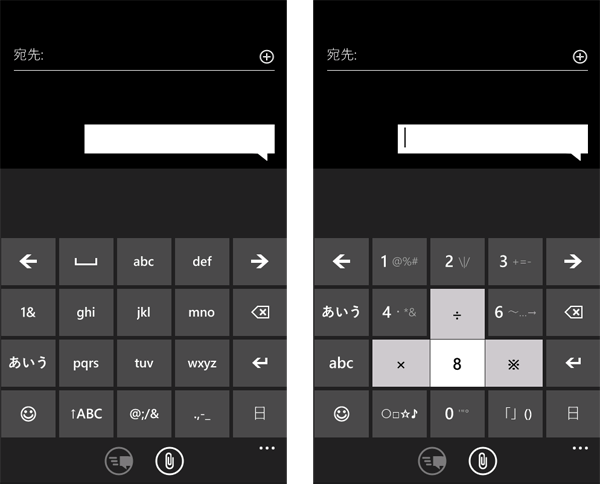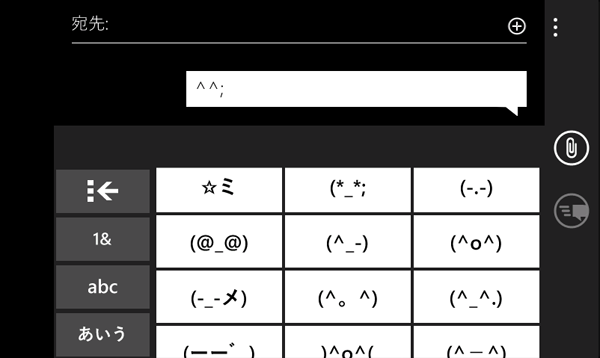
At MIX11, Microsoft announced as part of the forthcoming Windows Phone Mango update, support for several new East Asian languages will be added. It’s now revealed just how much the Windows Phone team has gone out of their way to optimize the soft input panel (SIP) experience for the languages.
For example, Japanese, one of the hardest languages to type with a keyboard (real or virtual) will feature a completely customized version of the touch keyboard with a drastically different layout and auto-completion interface. Most notably, the fewer keys have larger hitareas which takes up much more vertical space than the English counterpart. The press-and-hold behavior on the buttons is also visibly different.


As common with most East-Asian languages, the auto-completion engine will work not only with individual words but also complete sentences. To accommodate the wider variety of choices, tapping an arrow reveals a new screen with just auto-complete choices for easier selection.

And of course, true to the Japanese culture, it also features a unique and expansive set of Japanese emoticons that features Unicode characters not used in Western emoticons.
If it wasn’t obvious before, Microsoft is serious about breaking into the Asian market with Windows Phone 7 Mango. Although Microsoft’s geographic-restricted services is still a nightmare outside of the United States, it’s nice to see at least some internationalization plans coming to fruition.
i want hebrew!!!!!!!!!!!!!!!!
is it so hard?
I always thought Japanese was really easy to enter using a qwerty keyboard, since you just type the romaji and hit space a few times. I’m not a big fan of kana keyboards, though I suppose it would be useful for people used to Japanese phones.
Japanese kana input looks like the standard 10-key behavior employed on other devices. It’s actually really quick and easy to type on.
The emoticons will be ’emoji’ which started out as vendor/network specific extensions being standardized into a new Unicode range.
Shame they don’t offer the keypad style of entering text, symbols and advanced emoticons, for the English keyboard.
Where’s my Australian SIP?
This looks interesting. I hope it has the learning features that my AU phone has installed. The learning software helps speed up typing a lot.
The web-based Marketplace will let its users select and buy any of those 17,000 apps available on its platform on a web browser and can be transferred to their Window phone over the air. The option of using SMS in case of non availability of the web marketplace service is a smart move from Microsoft thus enabling its users to turn on the broadcasted service before even the software is downloaded and installed. Also the company expecting the users to install the apps in the background is fair enough. Another milestone set by the PC giant and also a challenge for the androids is the Multitasking feature on the Mango OS. The prime focus of Mango being the is also something to look out for enhanced cloud integration and better platform tools for developers is a noteworthy highlight.